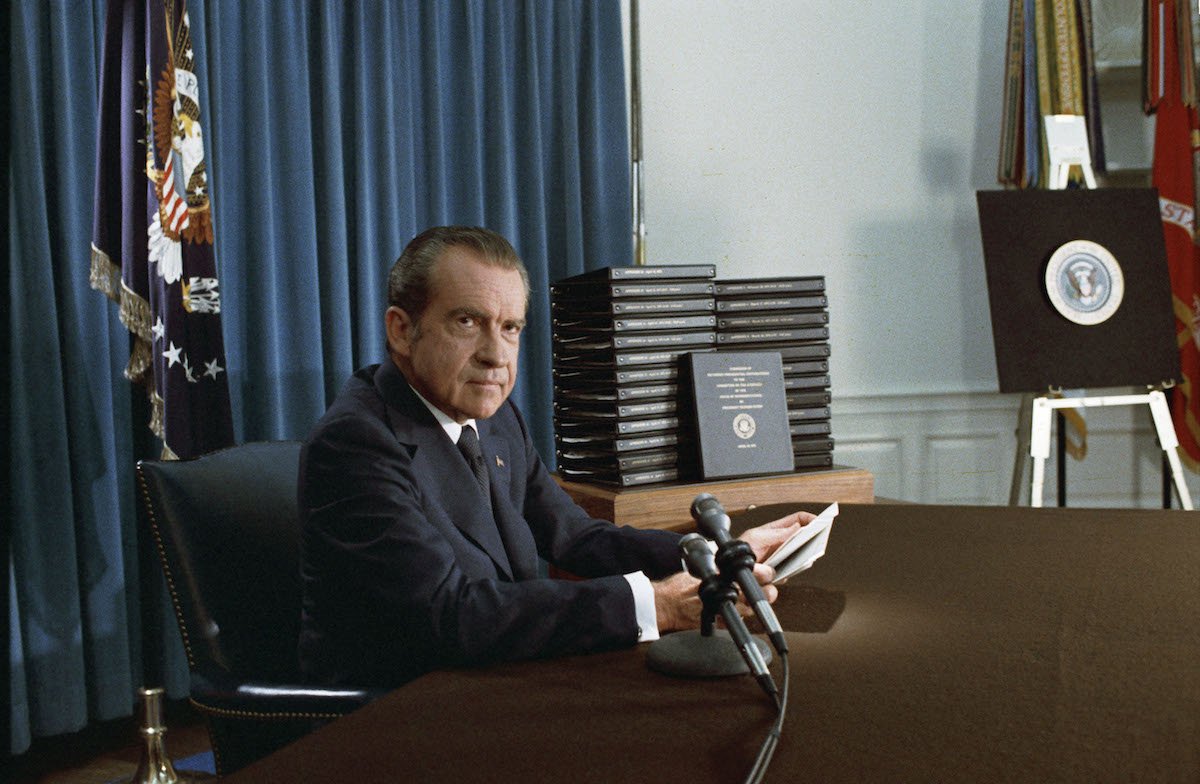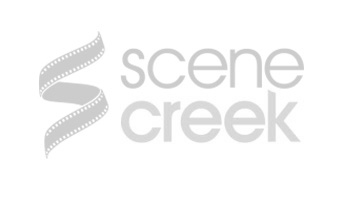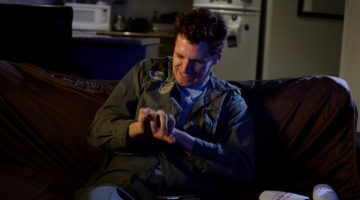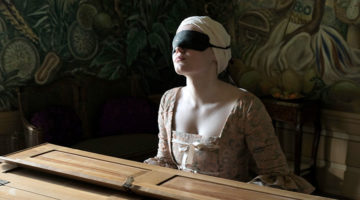At over four hours long, Watergate is a gripping and fascinating archival documentary.
Clocking in at a massive 260 minutes, the Chalres Ferguson’s documentary offers an in depth look at the Watergate scandal. To track the rise and fall of Richard Nixon, Ferguson expertly utilizes archive footage to explore the breadth of the scandal, while also using interviews and sparse reenactments to contextualize the archive footage. Most of the archive material comes from news coverage of the trial. In addition to the TV news coverage, Ferguson dives deep into the photo archives, unearthing photographic material from the period of the scandal’s main players, as well as the lesser-known politicians and figures. Furthermore, Ferguson’s use of the archive to construct the reenacted scenes is creative and compelling. For the reenactment sequences – most of which occur in the first hour of the film – Ferguson uses the audio from Nixon’s secretly recorded tapes to construct reenactments. For these reenactment sequences, the film plays a portion of the undoctored recordings before transitioning to dramatized sequences in which actors perform the dialogue from the tapes. The use of archive footage in Watergatepoints to the importance of the proper preservation of filmed material. This is a film that would not function in the same way had there been a lack of archival sources. Impressively, without the mention of contemporary politics, Watergateuses the archive to suggest the connection between then and now. With an impressive list of over two dozen archival sources (many of which were from local and national television stations), Ferguson had a wide range of material to choose from. Since the offerings were plentiful, Ferguson is able to select news clips in which anchors, journalists, and politicians talk about Nixon and Watergate in a manner that reflects the discussion of current politics in the media today. The archive footage that we see in the film has been carefully restored, within reason. The restoration team has restored the footage so that it looks its best, while still remaining true to the original material and formats. The footage used comes mostly from 16mm and VHS. The grain on the 16mm footage is noticeable and contrasts greatly with the static of the VHS recordings, especially those that held the broadcast news footage. Unlike some previous documentary’s that have utilized archive footage Ferguson’s team does not try and clean the footage to the extent that its original source and unrestored image is unidentifiable. The end result is a film that is at once gripping, yet informative, utilizing the archive in a successful attempt to transport the audience to the early 1970s.




